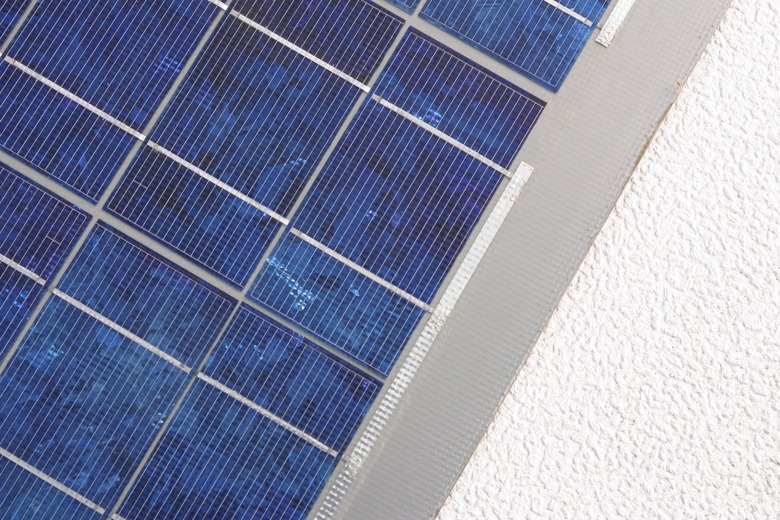How To Tell If A Solar Panel Is Wearing Out
Although solar panels are solid-state systems with few moving parts, they eventually wear out due to age, weather and mishaps. Even if you clean your panels regularly, the silicon semiconductors that generate the power degrade slowly; after a few decades, they no longer produce their rated voltage and current. You can tell if a solar panel's wearing out by inspecting it physically and monitoring its electrical output.
How Solar Panels Work
How Solar Panels Work
A solar panel is made up of dozens of individual cells, all connected in such a way as their electrical outputs add up. Inside each cell, electrons move in the silicon material in response to light, producing an electric current. Wires in the cell carry the current to the panel's main output; from there, other cables may connect the panel to batteries or electrical equipment.
Voltage and Current Output
Voltage and Current Output
Measure the solar panel's output and compare it with the panel's specifications and nominal rating. To ensure an optimal reading, measure the output at noon on a bright, sunny day. If the solar energy installation includes current and voltage displays, use these numbers to monitor the panel's electrical performance. Otherwise, measure the output with a multimeter. When measuring the current, make sure the meter is set to at least a 10-amp scale to avoid damaging the meter. If the voltage and current readings are more than 20 percent less than the panel's specified output, the panel may be wearing out.
Physical Deterioration
Physical Deterioration
Solar panels can wear out physically from weather and impacts from tree limbs and windblown debris. As with any object left outdoors, a panel expands and contracts slightly with changes in temperature; when the temperature differences are extreme, or when repeated many times over the course of years, this can lead to cracks in the enclosure or solar cell material. Likewise, damage from hail and other falling objects can cause the premature failure of a solar panel. A careful physical inspection of the panel will reveal any problems with physical deterioration. Also note that because dust and dirt will block sunlight, making periodic cleaning of the panel a necessity.
Age
Age
The useful lifetime of a typical solar panel is between 20 to 30 years; the panel continues to produce electricity, although its output will be significantly reduced. Slow changes in the photovoltaic silicon material reduce the panel's efficiency in converting light to electricity. If your solar panel is more than 20 years old and its electrical output is significantly less than its stated specifications, the panel is likely worn out
Related Components
The cause of a solar panel's reduced output may be with auxiliary components connected to the panel rather than the panel itself. For example, panels may be connected to an inverter and battery system to produce 120 volts AC; problems with the inverter electronics may be to blame for reduced output. Similarly, the lead-acid batteries used to produce electricity at night have limited lifetimes; after a few years, you may need to replace them. Solar panel wiring is also subject to weathering and corrosion; as the wires are a crucial connection between the panel and other components, you should inspect them every few years.
Cite This Article
MLA
Papiewski, John. "How To Tell If A Solar Panel Is Wearing Out" sciencing.com, https://www.sciencing.com/tell-solar-panel-wearing-out-24077/. 24 April 2017.
APA
Papiewski, John. (2017, April 24). How To Tell If A Solar Panel Is Wearing Out. sciencing.com. Retrieved from https://www.sciencing.com/tell-solar-panel-wearing-out-24077/
Chicago
Papiewski, John. How To Tell If A Solar Panel Is Wearing Out last modified March 24, 2022. https://www.sciencing.com/tell-solar-panel-wearing-out-24077/
